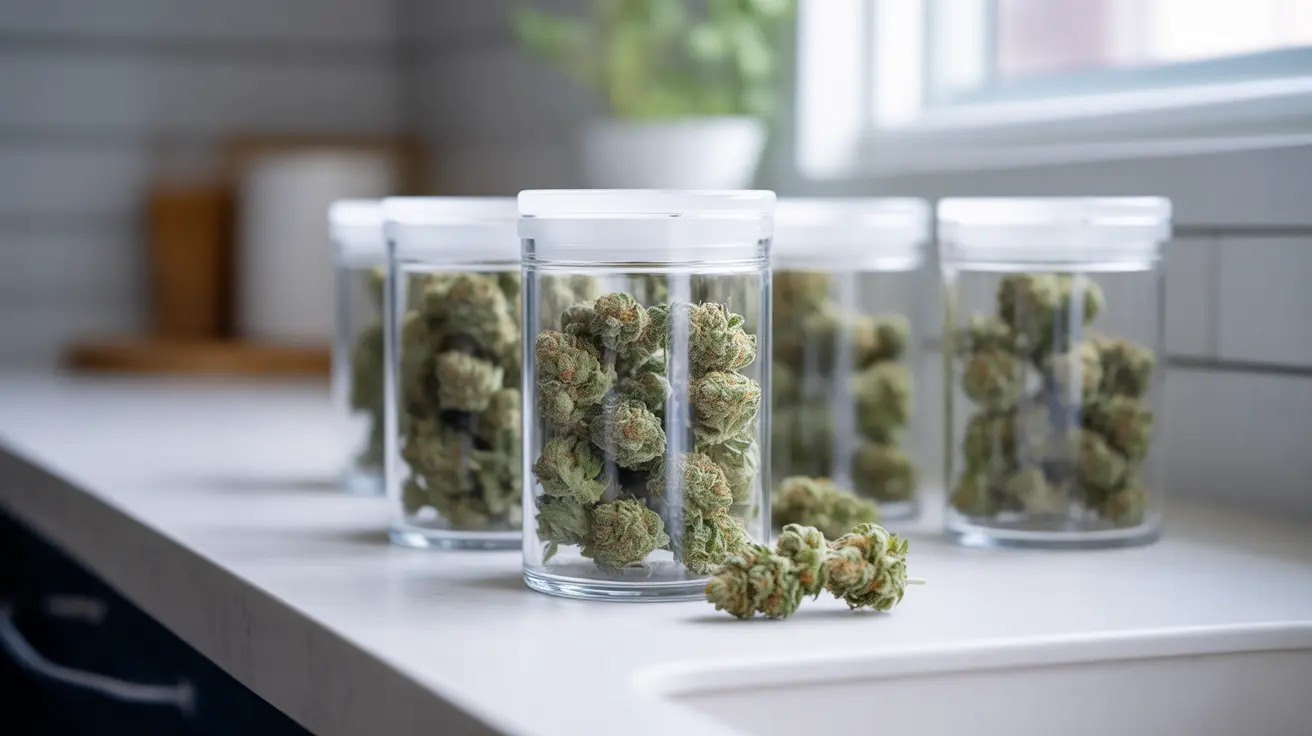For cannabis users, knowing how to properly store their product and recognize signs of degradation is crucial for both safety and optimal experience. While marijuana doesn't "expire" in the traditional sense like food products, it can definitely deteriorate, lose potency, or become unsafe to use under certain conditions.
Understanding how cannabis ages and what affects its quality can help users maintain their supply's freshness and avoid potential health risks. Let's explore the key factors that influence marijuana's shelf life and how to identify when it's no longer safe to consume.
Signs of Deteriorated Cannabis
When cannabis begins to degrade, several noticeable changes occur that can signal it's past its prime:
- Loss of aroma or changed smell
- Brittle, crumbly texture
- Visible color changes
- Unusual dryness or excessive moisture
- Loss of trichomes (crystalline structures)
If you notice any of these changes, it's important to carefully evaluate your cannabis before using it. While some changes might only affect quality, others could indicate serious safety concerns.
Understanding Cannabis Degradation
Cannabis doesn't spoil like perishable foods, but several factors can affect its quality over time:
Chemical Changes
THC naturally converts to CBN over time, especially when exposed to light and heat. This process reduces potency and can alter the effects you experience. While not necessarily harmful, it may result in a less desirable experience.
Environmental Factors
Several environmental conditions can speed up degradation:
- Exposure to light
- Temperature fluctuations
- Humidity changes
- Air exposure
- Direct sunlight
Proper Storage Methods
To maintain cannabis quality for as long as possible, consider these storage guidelines:
- Use airtight, glass containers
- Store in a cool, dark place
- Maintain consistent temperature (60-70°F)
- Keep humidity levels between 59-63%
- Avoid plastic containers or bags
Common Storage Mistakes
Many users unknowingly compromise their cannabis quality through improper storage. Avoid these common errors:
- Storing in the refrigerator or freezer
- Using plastic bags long-term
- Keeping cannabis in direct sunlight
- Storing in areas with high humidity
Identifying Mold and Contamination
Mold is one of the most serious issues that can affect stored cannabis. Look for these warning signs:
- White, fuzzy growth
- Powdery, grey-white coating
- Musty, damp smell
- Dark spots or discoloration
If you detect any signs of mold, dispose of the affected cannabis immediately. Smoking moldy marijuana can cause serious respiratory issues and other health problems.
Frequently Asked Questions
How can you tell if your weed has gone bad or is unsafe to use?
Look for visual changes like mold growth, discoloration, or unusual texture. Also check for off-putting smells, excessive dryness, or unusual moisture. If you notice any of these signs, especially mold, dispose of the cannabis immediately.
Does weed expire, and does old cannabis lose its potency or have health risks?
While cannabis doesn't technically expire, it does degrade over time. THC converts to CBN, reducing potency, and improper storage can lead to mold growth or contamination. Old cannabis typically loses effectiveness but isn't inherently dangerous unless contaminated.
What's the best way to store cannabis to keep it fresh and potent for as long as possible?
Store cannabis in airtight glass containers in a cool, dark place with controlled humidity (59-63%) and temperature (60-70°F). Avoid plastic containers and exposure to light, heat, or excessive moisture.
How long does weed stay good, and what factors affect its shelf life at home?
Properly stored cannabis can maintain good quality for 6 months to a year. Factors affecting shelf life include storage conditions, initial quality, exposure to light and air, temperature fluctuations, and humidity levels.
What are the signs of mold on cannabis, and what should you do if you find it?
Signs of mold include white fuzzy growth, powdery coating, dark spots, or a musty smell. If you find mold, immediately dispose of the affected cannabis, as smoking moldy marijuana can cause serious health problems.




